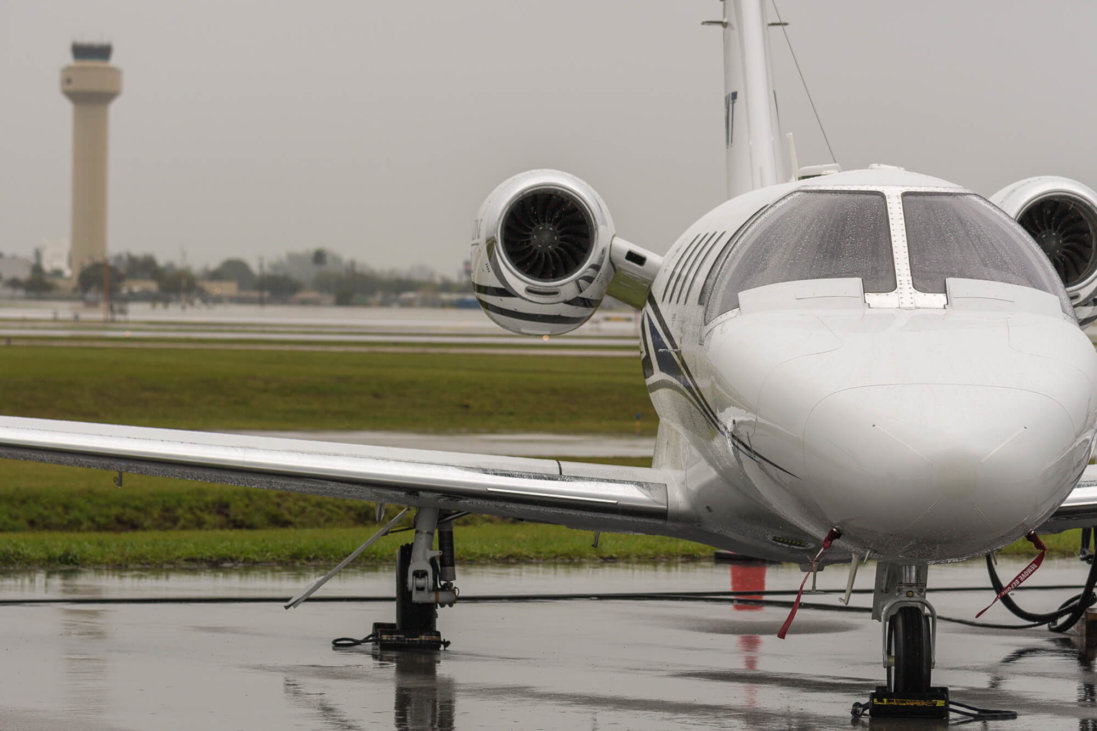
July 10, 2019
The recent FAA Safety Alert for Operators (SAFO) 19003, Turbojet Jet Braking Performance on Wet Runways, warns operators that advisory data for wet runway landings may not provide a safe stopping margin, especially in conditions of moderate or heavy rain.
The SAFO was prompted by an analysis of recent runway landing incidents and accidents that occurred on both grooved and smooth surface during periods of moderate to heavy rain, and raised concerns with wet runway stopping performance assumptions. The analysis indicated the braking coefficient of friction in each incident or accident was significantly lower than expected as defined by Part 25 airworthiness standards and other FAA advisory materials, including Advisory Circular 25-7D. In fact, the analysis determined 30-40 percent of additional stopping distance may be required if the runway transitions from wet to contaminated based on the rainfall intensity or reported water contamination (greater than 1/8-inch depth).
Takeoff and Landing Performance Assessment (TALPA) procedures define “wet” as “includes damp and 1/8-inch depth or less of water,” while “contaminated” means “greater than 1/8-inch of water.” While the FAA recommends airports report wet runway conditions, only contaminated runway reports are required and it is sometimes impractical for airports to generate a Field Condition NOTAM for sudden rain showers that cause temporary conditions meeting the definition of contaminated.
The TALPA Aviation Rulemaking Committee also developed new methodology for conveying actual runway conditions, designing the Runway Condition Assessment Matrix (RCAM) to standardize the format of stated contaminant types and depths.
Pilots are encouraged to review the RCAM and use the more conservative time-of-arrival landing performance data if a runway surface may be wet or contaminated upon arrival. If uncertain of an aircraft’s ability to stop within the landing distance available during wet or contaminated conditions and moderate or heavy rain, operators should be prepared to go around, hold until conditions improve or divert to an alternate airport.
The FAA encourages turbojet airplane operators to review their training programs to ensure pilots are familiar with assumptions used to create landing distance data.
“NBAA encourages operators and pilots to use caution when operating in moderate or heavy rain and become familiar with the recommendations in the Runway Condition Assessment Matrix,” said Brian Koester, the association’s senior manager of flight operations and regulations. “It’s important to understand how landing performance data is calculated and how changing runway conditions impact your ability to land safely, especially as we enter the season known for pop-up storm activity in many regions.”


 International Business Aviation Council Ltd.
International Business Aviation Council Ltd.